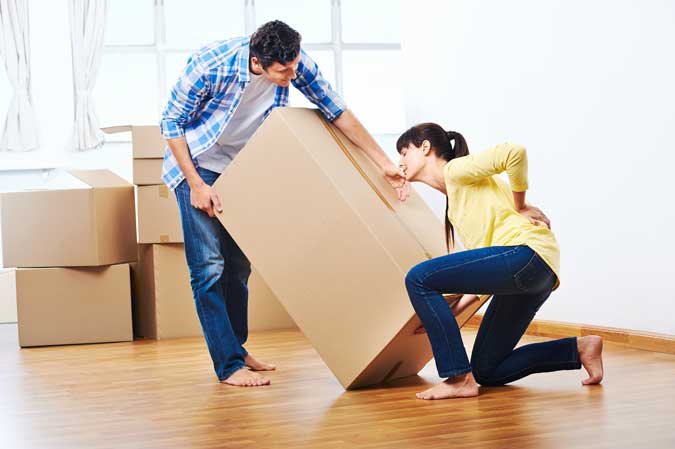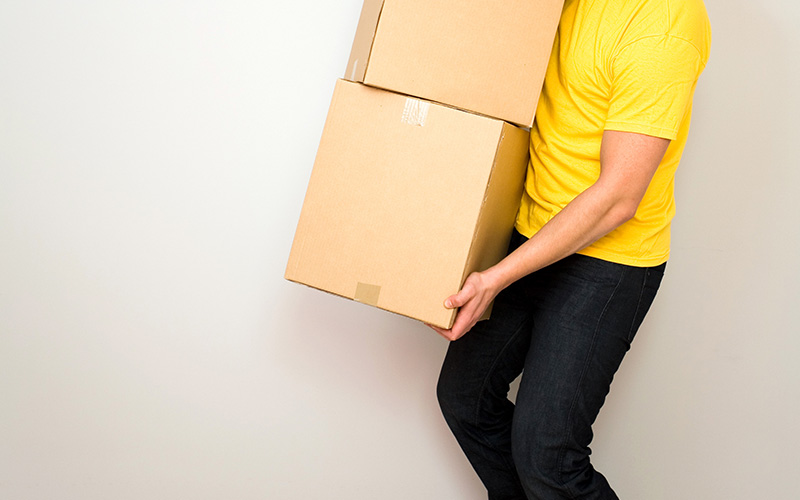According to the National Library of Medicine, the most typical cause of sharp back pain is a sudden injury to the ligaments and muscles supporting your back. Lifting heavy things can cause muscle strains, spasms, and tears to the muscles and ligaments that lead to significant back pain. In order to help relieve back pain associated with heavy lifting rest, gentle exercise, and use of over-the-counter pain medications, however, you may require professional orthopedic care in some circumstances.
The risk of painful spasms, strains, and tears can be reduced by correctly lifting heavy objects.

Lifting Heavy Objects Correctly
Examine the object for potential problems
Find out if the object is difficult to grasp or slippery. Examine for holes, tears, rips, dangling pieces, or contents that may move as you lift the object.
Estimate the weight of the object
Remember, a small package is not always lightweight. So, move the object lightly with your hands or feet to see how effortlessly it moves.
Do not attempt to lift it if it weighs more than you can safely raise by yourself. Break down the object into smaller pieces, if possible, and make several trips, or ask somebody to assist you.
Think through the task before you start
Try to decide in advance where you will place the object and how you will bring it there. Set out a safe way and remove any obstacles that may stumble you. Beware of uneven floors, puddles, and unsecured rugs that may slip out from under you. Determine if you require a ladder, hand truck, gloves, dolly, or other special equipment.
Enlist the help of a partner
A partner besides helping you lift especially heavy objects can move obstacles that suddenly fall into your path, or act as a spotter who warns you of trouble when the object you are carrying covers your view. Before you begin to move heavy objects consult your plan in detail with your partner so that you function together as a crew.
Convert gallons to cubic meters

Begin in a safe position
Rather than bending over, lift the object from a kneeling position if the object is on the floor. Put one knee on the floor and stand as close to the object as possible. As you prepare to stand, rest the object on your knee.
As you stand, hold the natural curve of your back
As you stand hold the core muscles in your abdomen tight. Look straight ahead and keep your head back to keep the right alignment in your back and neck. Try to use the muscles in your legs rather than the muscles in your back, to lift the object. As you lift, evade twisting at the waist because this can injure the muscles in your back. If you require to turn, step to the side.
Instead of kneeling, lift from the squat position
You can safely lift higher objects, like those on a table, without kneeling if you have trouble kneeling or rising from a kneeling position. In order to give your body a wide base of support, start by spreading your feet shoulder-width apart. You may discover that putting one foot barely in front of the other increases stability. Stand as close as attainable to the object then bend at your knees, not at your waist, as required to lift the object.
Place the object so you can get a good grip on it
To ensure a firm hold you might find it easier to tilt the object onto its side.
Allow your legs do the work
In order to gradually lift the object use the muscles in your legs, not your back. Hold the natural curve of your back as you pick up the object. Try to maintain your core muscles tight.
Hold the object near your body as you lift
If you can, hold the object at the belly button level. Holding a heavy object away from your body puts additional stress on the muscles of your back and this pressure could lead to injury.
Try not to hold your breath
When you lift a heavy object breathe as normally as possible. Holding your breath during physical work can provoke cramps or even raise your blood pressure to an unsafe level. If you feel out of breath, put the object down and rest. Breathing normally supplies your muscles with oxygen.
Move in a slow fashion
Rushing increases the risk of falling, so, walk unhurriedly and deliberately while carrying heavy objects.

Change direction with your feet
In order to avoid injuring your lower back, use your feet to change direction rather than twisting at your waist. Take little steps as you alter direction. Guide with your hips and hold your shoulders aligned with your hips as you move.
Bend at the knees and hips to place the object down
When you put the object down use the same proper body mechanics as when you picked up the object. Squat down, keep your back straight, look at the wall and tense your core muscles.
Weight alone does not define the chance of back injury. Further risk factors for back injury incorporate:
- How frequently do you lift heavy objects
- Whether you twist or bend while lifting
- How high do you raise an object
- The actual height of the item – objects resting below the level of your knuckles may be of a greater risk for back injuries
- The length of time it takes to lift an object and the quantity of time you hold it.